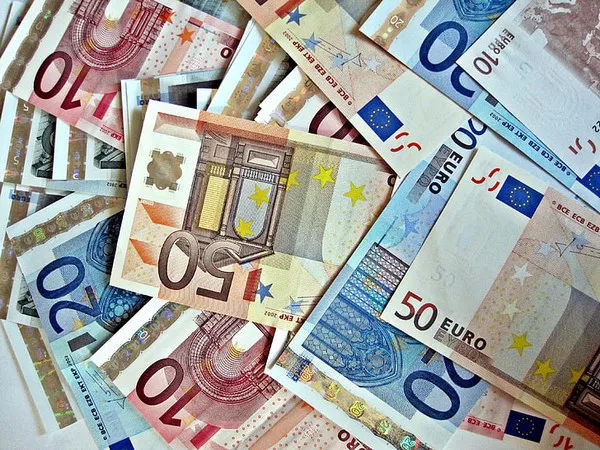The world of finance is marked by the constant ebb and flow of currencies, each vying for supremacy in the global economic arena. Among the most prominent contenders in this contest are the United States Dollar (USD) and the Euro (EUR). In this in-depth analysis, we explore the factors that influence the relative strength of these two heavyweight currencies and attempt to answer the age-old question: Which is higher, the dollar or the euro?
Understanding the Basics
Before delving into the intricacies of the dollar-euro battle, it’s essential to grasp some fundamental concepts about these currencies.
The U.S. Dollar (USD): The U.S. dollar is the official currency of the United States and is the world’s primary reserve currency. It’s denoted by the symbol “$” and is subdivided into cents. The Federal Reserve, the central bank of the United States, is responsible for managing the monetary policy that affects the dollar.
The Euro (EUR): The euro is the official currency of the Eurozone, a group of 19 European Union (EU) member states. It’s represented by the symbol “€” and is also subdivided into cents. The European Central Bank (ECB) is the institution responsible for overseeing the monetary policy that influences the euro.
Exchange Rates: The Heart of the Battle
The relative strength of currencies is primarily determined by exchange rates, which represent the value of one currency in terms of another. In the context of the dollar and the euro, the exchange rate between them dictates how many dollars are needed to purchase one euro and vice versa.
Exchange rates are influenced by a wide array of factors, including:
Interest Rates: Central banks, such as the Federal Reserve (Fed) for the dollar and the ECB for the euro, set interest rates. Higher interest rates often attract foreign capital seeking better returns, driving up demand for the associated currency.
Economic Indicators: Economic data, such as GDP growth, employment figures, and inflation rates, can impact currency strength. Strong economic performance typically bolsters a currency’s value.
Political Stability: Political stability and effective governance are seen as positive factors for currency strength. Countries with stable political environments are often viewed as safer investments.
Market Sentiment: Investor sentiment and speculation play a significant role in short-term currency movements. News, events, and market sentiment can cause sudden shifts in exchange rates.
Trade Balances: A country’s trade balance, which is the difference between exports and imports, can influence its currency’s strength. Trade surpluses tend to strengthen a currency, while deficits may weaken it.
Comparing Strengths: Dollar vs. Euro
Analyzing the relative strength of the dollar and the euro is a nuanced task that requires examining multiple dimensions:
Historical Performance: Historically, the dollar has been considered the world’s primary reserve currency. It has often displayed strength and stability, backed by the economic might of the United States. However, the euro has also established itself as a formidable player, challenging the dollar’s dominance in international finance.
Economic Powerhouses: The United States and the Eurozone are both economic powerhouses with substantial global influence. The performance of their respective economies, monetary policies, and geopolitical factors can sway the balance of strength between the two currencies.
Interest Rate Policies: Central banks play a pivotal role in currency strength through their interest rate policies. When the Federal Reserve raises interest rates, it can lead to a stronger dollar as investors seek higher returns. Conversely, the ECB’s policies can impact the euro’s value.
Global Events: Events with global repercussions, such as financial crises or geopolitical tensions, can trigger fluctuations in currency markets. The responses of the U.S. and EU to these events can affect the relative strengths of their currencies.
Market Dynamics: The currency market is highly liquid and subject to rapid changes in response to news and market sentiment. Traders and investors often engage in speculative activities that influence exchange rates.
The Ongoing Battle
The dollar and the euro are engaged in an ongoing battle for supremacy in the global financial landscape. Both currencies have their strengths and weaknesses, and their relative positions can change over time. While the dollar has traditionally held the upper hand, the euro’s emergence as a major international currency has added a new layer of competition.
The dynamics of the dollar-euro relationship are complex, and predicting their future movements requires a deep understanding of global economics, politics, and finance. Currency traders, central banks, and policymakers closely monitor these developments to navigate the ever-shifting terrain of international finance.
Investor Considerations
For investors and businesses engaged in international trade, the relative strengths of the dollar and the euro are of paramount importance. A stronger dollar can make U.S. exports more expensive and impact multinational corporations’ earnings, while a robust euro can benefit European exporters.
Diversification and risk management are key strategies for mitigating the impact of currency fluctuations. Investors often use financial instruments such as forward contracts, options, and currency hedging to protect their assets from adverse currency movements.
Conclusion
In conclusion, the question of whether the dollar or the euro is “higher” is not a straightforward one. Their relative strengths are influenced by a multitude of factors, and the balance of power can shift over time. Understanding the intricacies of this battle of currencies is essential for anyone with a vested interest in the global financial landscape.


